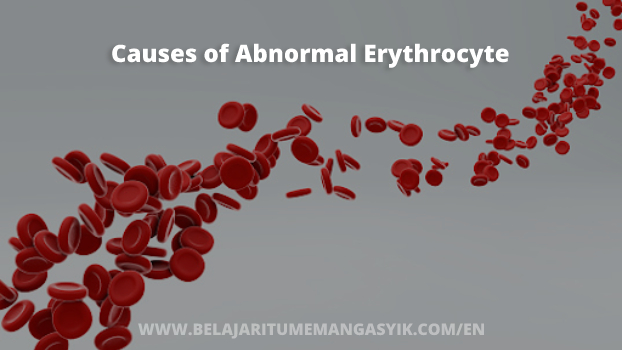The definition of red blood cells or erythrocytes is a type of blood cell that flows in our body to know Causes of Abnormal Erythrocyte. Erythrocytes play an important role in human survival, distributing oxygen throughout the body.
The level of erythrocytes in the body must remain within normal limits to maintain good health. Besides that, as the normal and abnormal values of erythrocytes can indicate a certain blood abnormality.
What is Erythrocyte?
Blood itself consists of three types of cells, namely red blood cells, white blood cells, and platelets. Red blood cells, also called erythrocytes, are the most abundant type of blood cell, making up approximately 40 to 45 percent of the total blood volume.
After that, Erythrocytes contain hemoglobin, a protein that binds oxygen. Allowing red blood cells to carry oxygen from the lungs to the rest of the body. Oxygen is needed by tissues and organs to function properly.
Erythrocytes and other blood cells are produced in the bone marrow and released into the bloodstream when mature. The lifespan of erythrocytes is around 120 days. After which the blood cells die and must be replaced by new blood cells produced by the bone marrow.
In general, erythrocytes are blood cells that are round and slightly indented in the center, similar to a doughnut. These blood cells are made in the bone marrow through a process called erythropoiesis.
Erythrocytes have a very elastic shape and can change shape to adapt when flowing through small blood capillaries. This property allows erythrocytes to quickly spread in the blood stream to reach various organs in the body.
Normal Erythrocyte Count
The normal red blood cell count can generally be calculated or measured through a test called a complete blood count.
According to Lab Tests Online, red blood cell counting through this test includes:
- RBC (Red Blood Cell), the number of red blood cells in your blood sample.
- Hemoglobin, the total amount of oxygen-carrying protein in blood.
- Hematocrit, the percentage of blood volume made up of red blood cells.
- MCV (Mean Corpuscular Volume), the average size of red blood cells.
- MCH (Mean Corpuscular Hemoglobin), the average amount of hemoglobin in red blood cells.
- MCHC (Mean Corpuscular Hemoglobin Concentration), the average concentration of hemoglobin in red blood cells.
- RDW (Red Cell Distribution Width), the variation in size of red blood cells.
- Reticulocytes, the absolute or percentage amount of newly formed young red blood cells in your blood sample.
After that, the doctor will measure the amount of red blood cells in the body to help diagnose medical conditions and also learn more about our health.
After that, the doctor may need to conduct more tests to determine what is causing the number of our red blood cells to be high or low.
In general, the function of red blood cells is to carry oxygen from the lungs to all tissues and organs. In red blood cells, there is a protein molecule called hemoglobin. Which can bind iron, giving blood its red color in Causes of Abnormal Erythrocyte.
